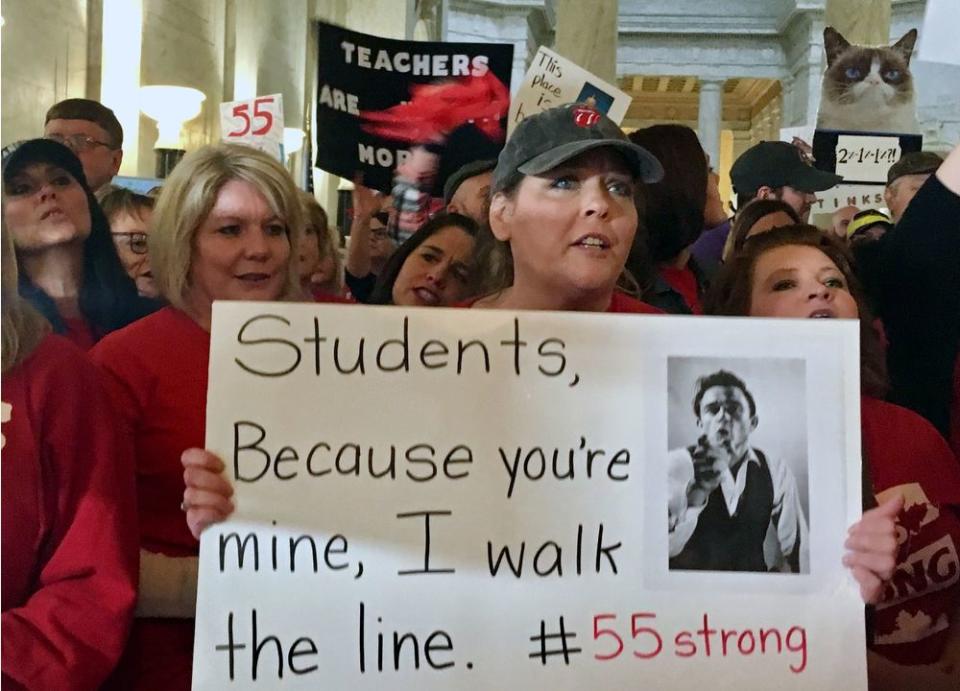What To Know About the West Virginia Teachers Strike That's Engulfed the Entire State
Teachers across the state of West Virginia have been striking since last Thursday for better pay and benefits.
The strike, now in its fourth day, involves around 20,000 teachers and 13,000 school service employees from all of West Virginia’s 55 counties. It is the first teacher strike in the state since 1990. Here’s what you need to know:
What do West Virginia teachers want?
At the heart of the strike is a bill signed last Wednesday by West Virginia Governor Jim Justice that gave teachers a 2% raise in July and a 1% raise in 2020 and 2021. But teachers say it didn’t go far enough to address issues associated with the cost of living in the state. In particular, they complain that the cost of getting health care through the public employees insurance program, which covers all state employees, is too high. Beyond the difficulties they face in making ends meet, teachers fear these conditions will discourage good educators from coming to the state and staying. West Virginia ranks 48th out of 50 states in terms of teacher pay.
What are students doing during the strike?
West Virginia’s Superintendent of School Stephen Paine has urged teachers to go back to the classroom out of concern for students. Over the weekend he released a statement saying, “Families will be forced to seek out alternative safe locations for their children, and our many students who depend on schools for daily nutrition will face an additional burden.” Kym Randolph, a spokeswoman for the West Virginia Education Association, said the teachers would much prefer to be in the classroom, but felt that nothing would get done if they didn’t demonstrate. Missed classroom instruction time will be added on to the end of the school year.

Last Wednesday, before the strike began, teachers gathered to assemble bags of food for students who rely on schools for their meals. Nearly one in four children in West Virginia live in poverty.
Is the teachers’ strike legal?
Before the strike began last week, state Attorney General Patrick Morrisey, who is running for a U.S. Senate seat, said in a tweet that the strike would be “unlawful.” This is, in fact, the case. In response to the 1990 teacher strike in the state, the then-attorney general, a Democrat, wrote, “There is no right to strike against the state. Thus, any strike or concerted work stoppage by the public teachers of this state is illegal. … It is our opinion that any strike by public teachers is illegal and may be dealt with accordingly by school officials.”
The state Supreme Court later upheld this opinion, but called striking “unlawful” rather than “illegal.” That means the teachers aren’t committing a crime by striking. Public sector workers in West Virginia do not have collective bargaining rights.
When will the strike be over?
Christine Campbell, president of the American Federation of Teachers’ West Virginia chapter, has called on state leaders to bring everyone to the table, saying, “We can’t have five different conversations.” She also said that union officials have not been able to speak directly to the governor, who has made appearances at town-hall style meetings but has not met with teachers in a negotiation setting. On Monday, he pledged to launch a task force on education issues “within a week to 10 days” and urged teachers to return to classrooms on Tuesday.
The 1990 strike lasted 11 days. If that’s any guide, the West Virginia teachers could be at it a while longer.
